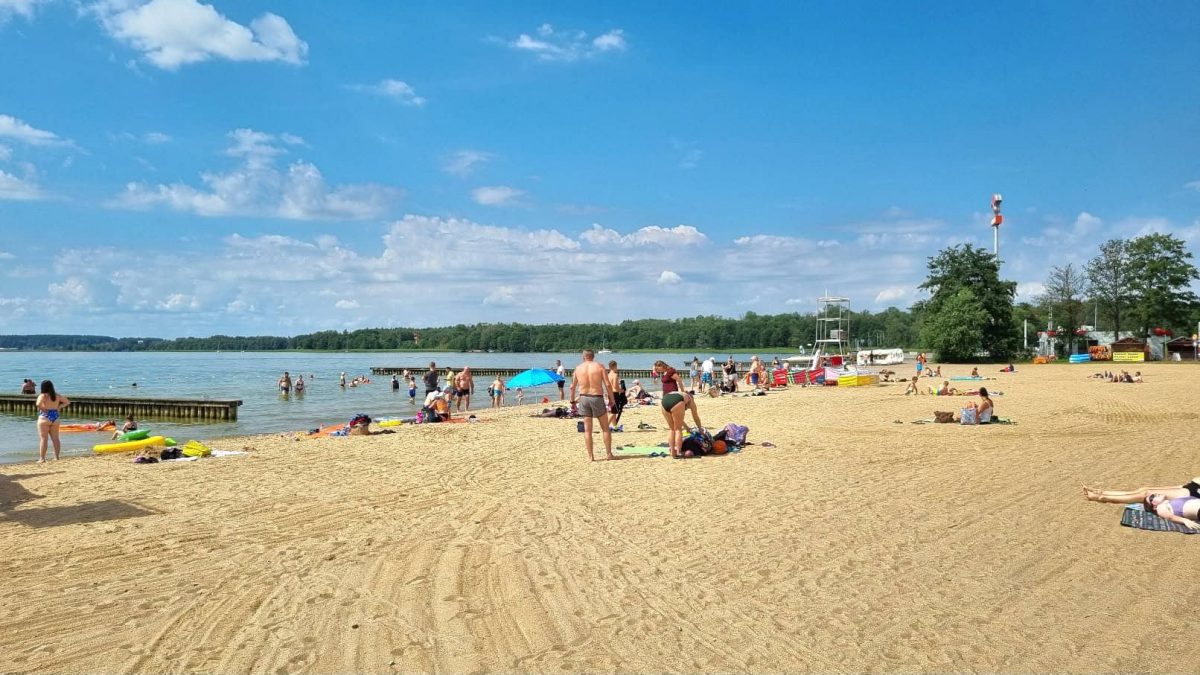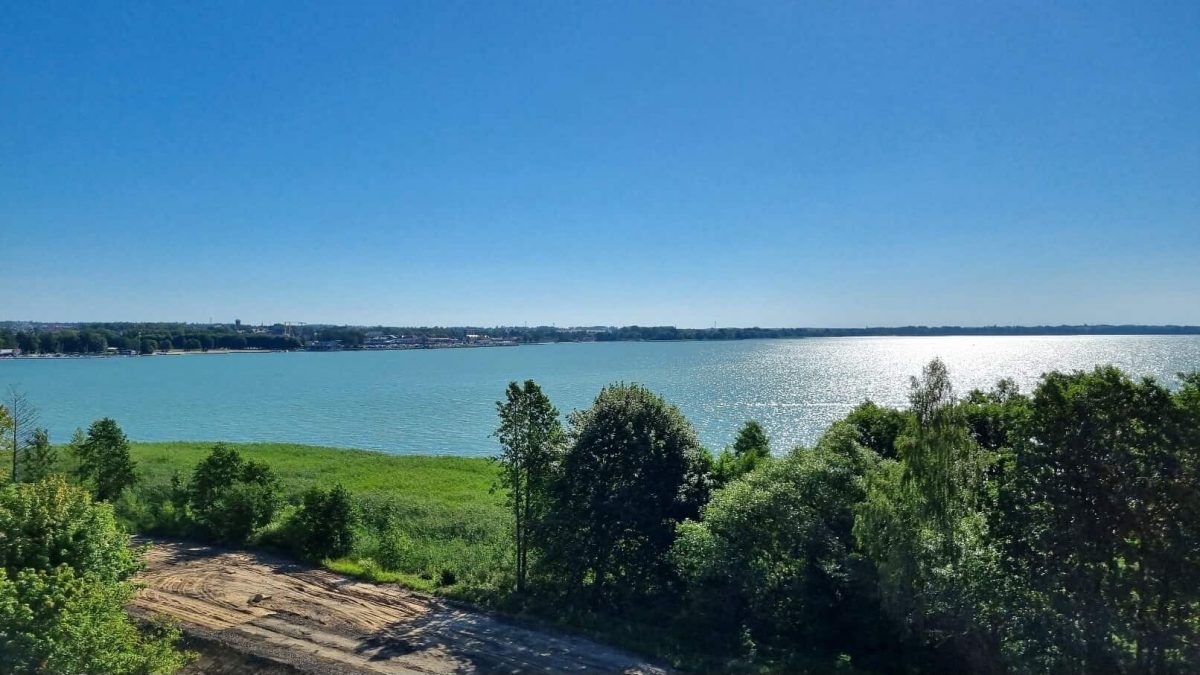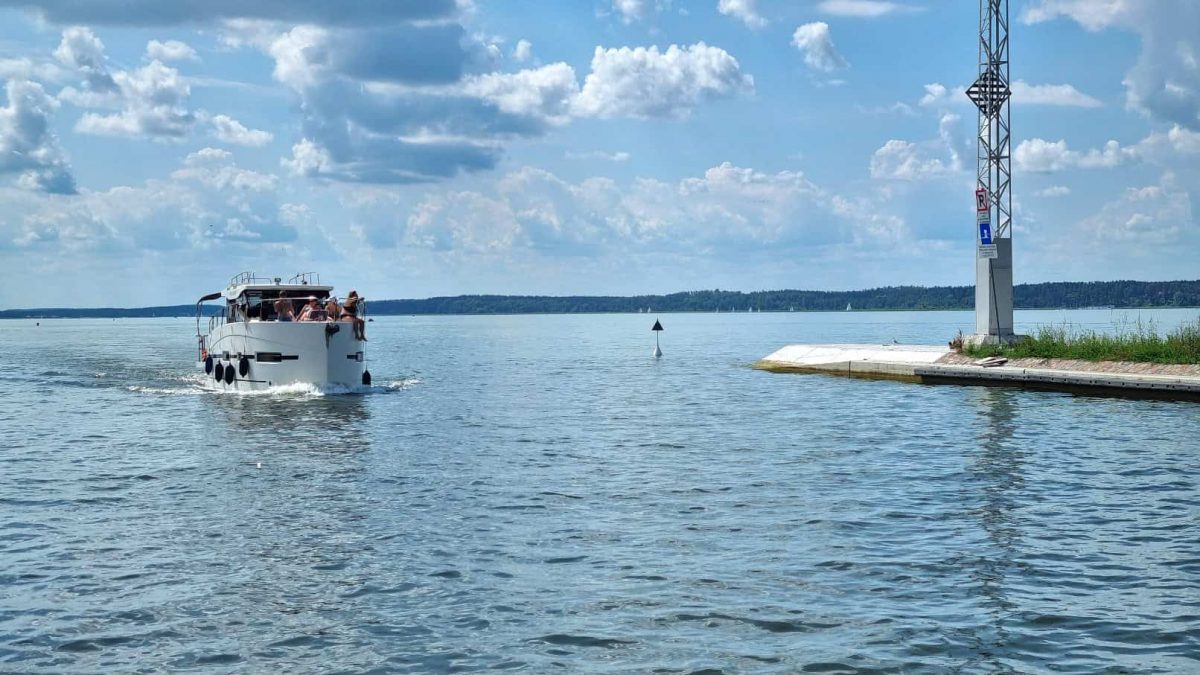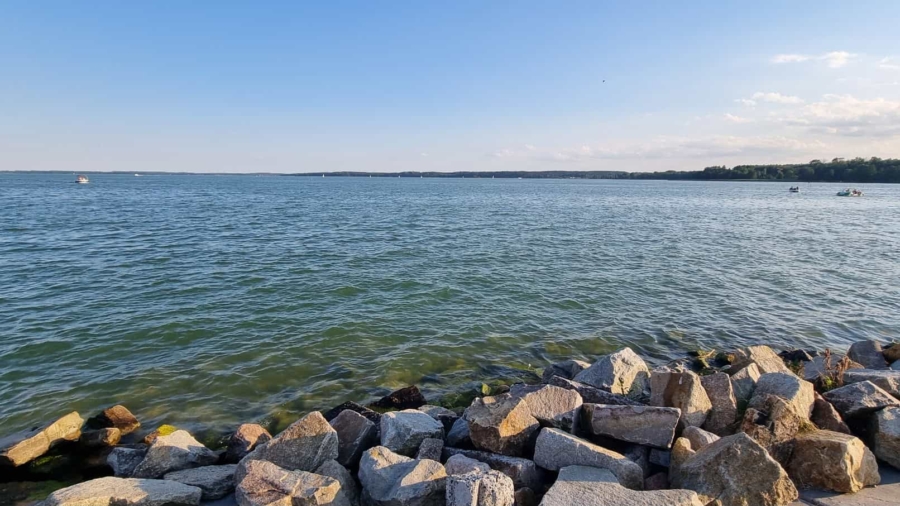This brief review of Lake Niegocin in the Masurian Lake District follows on nicely from a review of my time in Giżycko. The town of Giżycko is known as both the “Sailing Capital of Poland” and the “summer water capital of Poland” and is surrounded by two major lakes – Niegocin and Kisajno. Niegocin is located south of Giżycko.
Everything you need to know about Lake Niegocin
With an area of 26 square kilometres, Lake Niegocin is the seventh largest lake in Poland.
Peter of Dusburg, a chronicler of the Teutonic Knights in the late thirteenth and early fourteenth centuries, referred to the lake as Negothin. Other names one might see in historical chronicles include Newentein and Newotin (by Nicolaus von Jersochin). A location document from 1475 referred to the lake as Newentein. In German nomenclature, the lake was known as Löwentinsee, while the Masurian population called it Lake Lewientyńskie, or simply – Lewientine. The name Niegocin officially came into use in 1949, replacing the previous German name of the lake – Löwentin.
The maximum depth of Lake Niegocin is 39.7 metres with an average depth of 9.9 metres. Niegocin is a relatively shallow lake. Between the island, Grajewska Kępa, and the western shore near Strzelce, there is a large shallow area which is only 30 cm deep at the shallowest point. This is a clear danger point for sailors. The banks of Niegocin tend to be low and flat, surrounded mostly by fields, meadows and small woods.
Some of the most attractive recreation centres, tourist towns and villages around Niegocin include Giżycko, Wilkasy, Strzelce, Kleczowo, Rydzewo and Bystry. In general, Niegocin is characterised by a poorly developed coastline. The eastern shore of the lake is particularly underdeveloped in terms of tourist infrastructure and access to the water.
The Łuczański Canal connects Lake Niegocin to Lake Kisajno in Giżycko. Southwest of St. Bruno’s Hill in Giżycko, the Niegociński Canal flows out of Niegocin. This provides an alternative route to Kisajno through Lake Tajty and the Piękna Góra Canal.
At the southwestern end of Niegocin, the lake runs freely into Lake Boczne. In the southeast, Niegocin connects with Lake Niałk Duży. It is through the small lakes Niałk Wielki and Niałk Mały, that Lake Niegocin connects with a several-kilometre-long picturesque trail of ribbon lakes – Wojnowo and Buwełno. Owing to the narrow and shallow connection of these two lakes, the entire trail is accessible only by kayaks and boats with a very shallow draft.
Finally, a short watercourse connects Lake Niegocin with Lake Grajewko on the eastern side of Niegocin.



Lake Niegocin and it’s Connection with Sailing, Cruising and other Water Sports
Numerous marinas in Giżycko and Wilkasy are the main point of interest for those who practise tourist sailing on Niegocin Lake. Southerly winds predominantly blow over the lake thus creating ideal conditions for sailors.
A popular sailing route runs from Giżycko to Mikołajki, Ruciane-Nida and further to Pisz. The starting point for this route is Lake Niegocin in Giżycko. This sailing route may be extended further north of Giżycko to the shores of Lake Mamry in the tourist town of Węgorzewo.
Via a system of lakes and canals, it is possible to sail from Niegocin all the way to Lake Śniardwy – the largest lake in Poland.
The vast surface of Niegocin means that many regattas are held on the lake in the summer. Moreover, numerous canoe, small boat and pedal boat rentals allow tourists to spend time on Niegocin. In the winter, ice boating, skiing, ice fishing and ice diving enthusiasts take advantage of the frozen surface of Niegocin.
Swimming in Lake Niegocin
There are a few beaches around the shore of Lake Niegocin which entice swimmers into the warm water in the summer. The sandy beaches in Giżycko and Wilkasy are well-kept, although the water is much cleaner in Giżycko than in Wilkasy.
Fishing on Lake Niegocin
Without a doubt, Niegocin Lake is a small paradise for fishermen with many species of fish present in the lake. These include zander, perch, bream, pike, eel, tench and large roach.
Islands in Lake Niegocin
There are two islands in Niegocin. Grajewska Kępa, also known as French Island (Wyspa Francuska) or Love Island (Wyspa Miłości) owing to two legends, is located on the eastern shores of the lake.
French Island
The name – French Island – refers to a folk story about two French soldiers belonging to Napoleon’s Grand Army who, at the end of the harsh winter of 1812/1813, reached the ice-covered lake from Moscow. On their last legs, they dragged themselves to a clump of trees and fell there unconscious. Anorta, a beautiful girl from a nearby village who had just gone out on the ice to collect reeds, found the men. Seeing how tired the soldiers were, Anorta lit a fire and gave the men a sip of vodka from her handy bottle. She promised that she would return with provisions.
Given that Prussia was the enemy of Napoleon’s France, the girl did everything in complete secrecy. Anorta wondered whether she loved the distinguished, though ragged, lieutenant, or his handsome adjutant. When the ice melted, she stole a fishing boat at night to give the soldiers some food and tender loving care. In the same boat, the French soldiers crossed to the western shore one night and continued their journey. Legend has it that the outcome of these romantic meetings on the island were twins, which the girl soon gave birth to.
Anorta married Helmut from Grajewo, who was surprised to become the father of dark-skinned, dark-eyed twins who bore no resemblance to him. Only on her deathbed did Anorta tell her sons who their father was. And it was they who, in honour of their father, named the island in Lake Niegocin French Island.
As Giżycko was friendly with the French department of Loir-et-Cher, the French founded a commemorative plaque in honour of these legendary compatriots in 1997. With full support of the local population, the plaque was installed on the island.
Love Island – The Legend of Galinda
According to legend, a wealthy fisherman once lived on Love Island with his family: his wife and twelve beautiful daughters. One day, the thirteenth daughter, Galinda, was born and turned out to be the most beautiful of all. Her parents decided that she should stay on the island and inherit the family fortune. However, Galinda had other plans when she grew up.
Galinda met and fell in love with a boy from the mainland. She wanted to get married to him and leave the island and lake altogether. When the fisherman learned about his youngest daughter’s plans, he felt despair and then became furious. He then decided to seek help from an old witch who hatched a wicked plan.
Aware of where the lovers’ permanent meeting place was, the witch went there, transformed herself into Galinda, and waited for the young boy. When he arrived at the appointed time at a quiet place on the shore of the lake, he saw his beloved and kissed her with joy. The witch did not arouse the boy’s suspicions due to the witch’s resemblance to Galinda. However, as soon as the boy touched the witch, he transformed into a frog.
When the real Galinda arrived at the pre-arranged meeting place, she found no one on the shore. Tired of the long wait, she decided to bathe in the lake after a few hours. After bathing, Galinda heard the croaking of frogs on the shore. She thought that one of them cackled slightly differently from the rest – a very loud cackle indeed. This aroused her curiosity, so she took the frog in her hands. Galinda recognized her lover in the frog’s eyes. Naturally, Galinda was deeply shocked by this terrible discovery. Galinda froze and remains motionless to this day, holding her beloved in her hands.


